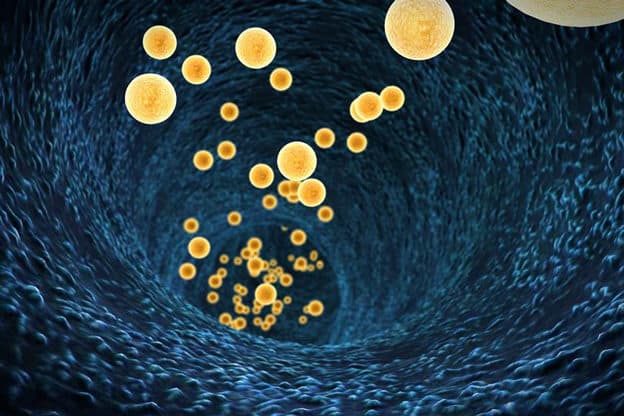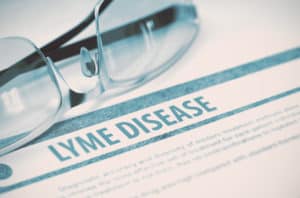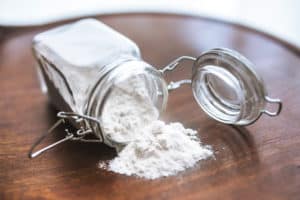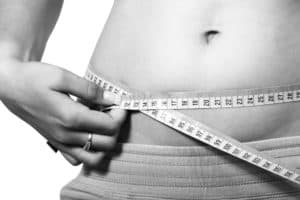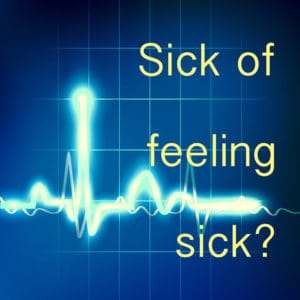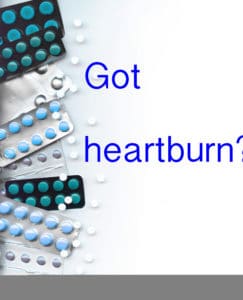Polycystic Ovarian Syndrome (PCOS) is the most common hormonal endocrine disorder in women of childbearing age, affecting approximately 5 million women in the United States.(1,2) It is also the most common cause of ovulatory infertility but research shows that lifestyle changes can help restore ovulation and improve pregnancy rates.(3) High androgens (“male hormones”) like testosterone, high insulin/insulin resistance, and low progesterone are just some of the clinical markers of PCOS.(4) Symptoms include irregular and/or a painful menstrual cycle or no menses, facial hair, acne, infertility, and balding.(5) The term PCOS can be misleading as not all women with PCOS have ovarian cysts. Another common misconception is that all women with PCOS are overweight or obese, however, there are plenty of women (about 20%) with a “normal” BMI who are diagnosed with PCOS.(6) Regardless of BMI, a combination of diet, lifestyle, and supplements should be the primary treatment choices for addressing PCOS.
It is estimated that 50-70% of women with PCOS have insulin resistance(2) so making some simple changes to the diet like eating protein with each meal can help to stabilize blood sugar. Sleep disturbances and obstructive sleep apnea are also common in women with PCOS and since sleep affects a variety of things including hunger hormones and insulin resistance, making sure to get adequate z’s is an important part of treatment.(7-10) Stress is an equally important factor to address and is even a potential cause of PCOS. Stress can cause the disruption or total loss of menstrual function in women (11) and as we know has an effect on everything else in our lives from what we eat to how much we sleep.
For these reasons we recommend treatment that focuses on the following 5 factors:
- Diet
- Sleep
- Stress
- Supplements
- Self-care
- The gut
Diet
- Focus on whole foods with a variety of fresh fruits, veggies, whole grains, beans/legumes, meat, fish, poultry, and oils
- Limit starchy processed carbohydrates (high amounts increase insulin & trigger inflammation)
- Have carbohydrates, fat, and protein at each meal to help stabilize blood sugar
- Aim for 2 cups of fruit and 2 ½ cups of vegetables each day
- Consume up to 6 ounces a day of whole grains like brown/wild rice, rolled oats, bulgur, and quinoa
- Include healthy fats like olive oil, olives, avocado, nuts, nut butter, seeds, eggs, and fish
- Use cinnamon which has been shown to improve insulin resistance and dyslipidemia
- Add garlic to your diet to reduce total cholesterol and triglycerides, just one clove a day shows improvement! (12)
Sleep
- Aim for between 7-9 hours a night (If you don’t feel rested with 7, you may need more.)
- Choose a relaxing bedtime routine and aim to turn off electronics 30 minutes to one hour before you go to bed
- If you have a hard time falling asleep consider taking a supplement like magnesium glycinate
Stress
- Take 5 deep breaths when you feel stressed to remind yourself that you’re okay!
- Take some time, even a few minutes, to practice yoga poses
- Make a list of what needs to be done so you don’t have to think about it
- Keep areas free of clutter to calm the mind
Supplements (5, 13-15)
- D-chiro-inositol (DCI) & Myo-inositol (MYO) – helps with: Ovulation, insulin resistance, dyslipidemia, androgen lowering, hypertension
- N-Acetylcysteine (NAC) – helps with: Insulin resistance, infertility, inflammation, androgen-lowering, dyslipidemia, bronchitis, & immune support
- Chromium Picolinate – helps with: improving glucose and insulin
- Cinnamon Cassia – helps with: decreasing HbA1c and fasting glucose
- Fish oil – helps with: Anti-inflammatory, dyslipidemia, hypertension, depression, androgen lowering, infertility, insulin resistance, Fatty Liver Disease
- Magnesium, Vitamin D, and B12 – helps with: insulin resistance, infertility, dyslipidemia
- Various herbs such as licorice, chasteberry, and milk thistle have been effective in the treatment of PCOS.
- Many of these supplements can be found on my online dispensary
Self-care (16, 17)
- Make the time to acknowledge your needs
- Examples include taking a bath, sipping a hot cup of tea, or going shopping
- Self-care is shown to improve health outcomes
- Mindfulness, bringing one’s attention to the present moment, can help with all of these components and has been shown to improve outcomes in women with PCOS.(18,19)
The Gut (20,21)
The research on the gut and PCOS is strong and growing more astounding by the month. An unbalanced microbiome is the root cause of most hormonal issues. And fixing the gut is an evidenced-based solution for PCOS. For more on how PCOS and the gut are related and how to fix your gut, check out my eBook!
Every person is different and will need an individualized plan which is why working with a registered dietitian nutritionist who understands your needs and specializes in PCOS is so important. Remember, it is our patterns over time that impact our health so don’t feel pressured to make all of these changes at once. Making changes to an already busy life is stressful in and of itself so pick one of the five factors to start with and focus on that! For more information and help, read my eBook.
References
- How many people are affected or at risk for PCOS?. Nichdnihgov. 2017. Available at: https://www.nichd.nih.gov/health/topics/PCOS/conditioninfo/Pages/risk.aspx. Accessed November 7, 2017.
- Grassi A. 30 INTERESTING FACTS ABOUT PCOS. PCOS Nutrition. 2017. Available at: http://www.pcosnutrition.com/facts/. Accessed November 7, 2017.
- LEGRO R. Pregnancy Considerations in Women With Polycystic Ovary Syndrome. Clinical Obstetrics and Gynecology. 2007;50(1):295-304. doi:10.1097/grf.0b013e31803057ed.
- Sirmans S, Pate K. Epidemiology, diagnosis, and management of polycystic ovary syndrome. Clinical Epidemiology. 2013:1. doi:10.2147/clep.s37559.
- Grassi A. Popular Supplements For PCOS. https://docs.google.com/file/d/0B-1AdyQf8ICwTXAtdzJLc0RXT1k/edit; 2017.
- Marshall J, Dunaif A. All Women With PCOS Should Be Treated For Insulin Resistance. Fertility and Sterility. 2012;97(1):18-22. doi:10.1016/j.fertnstert.2011.11.036.
- Moran L, March W, Whitrow M, Giles L, Davies M, Moore V. Sleep disturbances in a community-based sample of women with polycystic ovary syndrome. Human Reproduction. 2014;30(2):466-472. doi:10.1093/humrep/deu318.
- Helvaci N, Karabulut E, Demir A, Yildiz B. Polycystic ovary syndrome and the risk of obstructive sleep apnea: a meta-analysis and review of the literature. Endocrine Connections. 2017;6(7):437-445. doi:10.1530/ec-17-0129.
- Donga E, van Dijk M, van Dijk J et al. A Single Night of Partial Sleep Deprivation Induces Insulin Resistance in Multiple Metabolic Pathways in Healthy Subjects. Endocrinology. 2010;151(5):2399-2399. doi:10.1210/endo.151.5.9998.
- Why Is Sleep Important?. Nhlbinihgov. 2017. Available at: https://www.nhlbi.nih.gov/health/health-topics/topics/sdd/why. Accessed November 7, 2017.
- Berga S, Loucks T. Stress Induced Anovulation. Emory University School of Medicine; 2007. Available at: http://booksite.elsevier.com/brochures/stress/PDFs/berga.pdf. Accessed November 7, 2017.
- Zeng T, Guo F, Zhang C, Song F, Zhao X, Xie K. A meta-analysis of randomized, double-blind, placebo-controlled trials for the effects of garlic on serum lipid profiles. Journal of the Science of Food and Agriculture. 2012;92(9):1892-1902. doi:10.1002/jsfa.5557.
- Regidor P, Schindler A. Myoinositol as a Safe and Alternative Approach in the Treatment of Infertile PCOS Women: A German Observational Study. International Journal of Endocrinology. 2016;2016:1-5. doi:10.1155/2016/9537632.
- Grassi A. THE 4 BEST SUPPLEMENTS FOR FERTILITY. PCOS Nutrition. 2017. Available at: http://www.pcosnutrition.com/4-best-supplements-fertility/. Accessed November 7, 2017.
- Goswami P, Khale A, Ogale S. Natural Remedies for Polycystic Ovarian Syndrome (PCOS) : A Review.IntJPharmPhytopharmacolRes. 2012;1(6):396-402.
- Lorig K, Sobel D, Laurent D, Hobbs M. Effect of a self-management program on patients with chronic disease. Effective Clinical Practice : ECP. 2001;4(6):256-262. doi:11769298.
- Adams R. Improving health outcomes with better patient understanding and education. Risk Management and Healthcare Policy. 2010:61. doi:10.2147/rmhp.s7500.
- Stefanaki C, Bacopoulou F, Livadas S et al. Impact of a mindfulness stress management program on stress, anxiety, depression and quality of life in women with polycystic ovary syndrome: a randomized controlled trial. Stress. 2014;18(1):57-66. doi:10.3109/10253890.2014.974030.
- Raja-Khan N, Agito K, Shah J et al. Mindfulness-based stress reduction for overweight/obese women with and without polycystic ovary syndrome: Design and methods of a pilot randomized controlled trial.Contemporary Clinical Trials. 2015;41:287-297. doi:10.1016/j.cct.2015.01.021.
- Association between Polycystic Ovary Syndrome and Gut Microbiota.Guo Y1, Qi Y1, Yang X1, Zhao L1, Wen S1, Liu Y1, Tang L1.
-
Dysbiosis of Gut Microbiota (DOGMA)–a novel theory for the development of Polycystic Ovarian Syndrome.Tremellen K1, Pearce K.
*This is a non-sponsored post written by Crystal Longo Savoy


